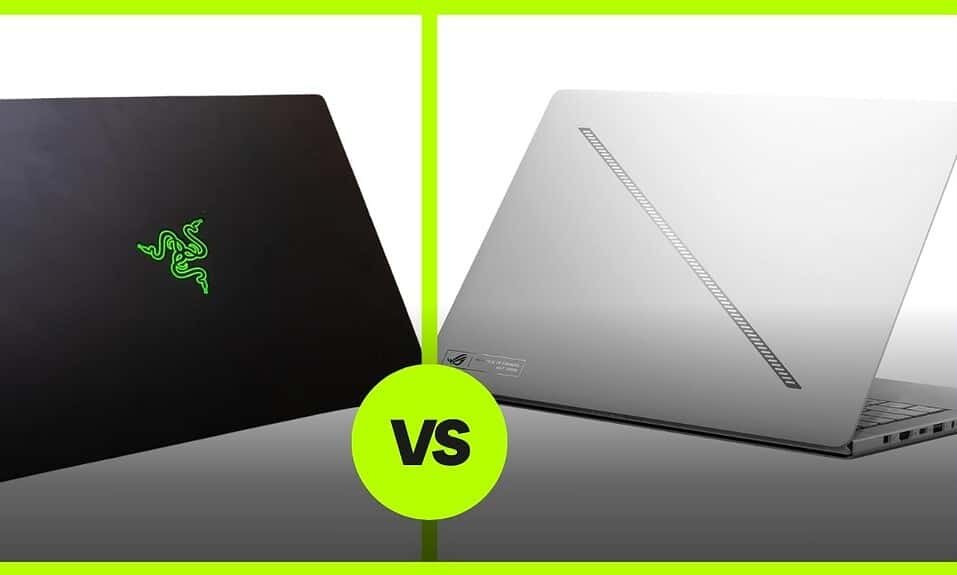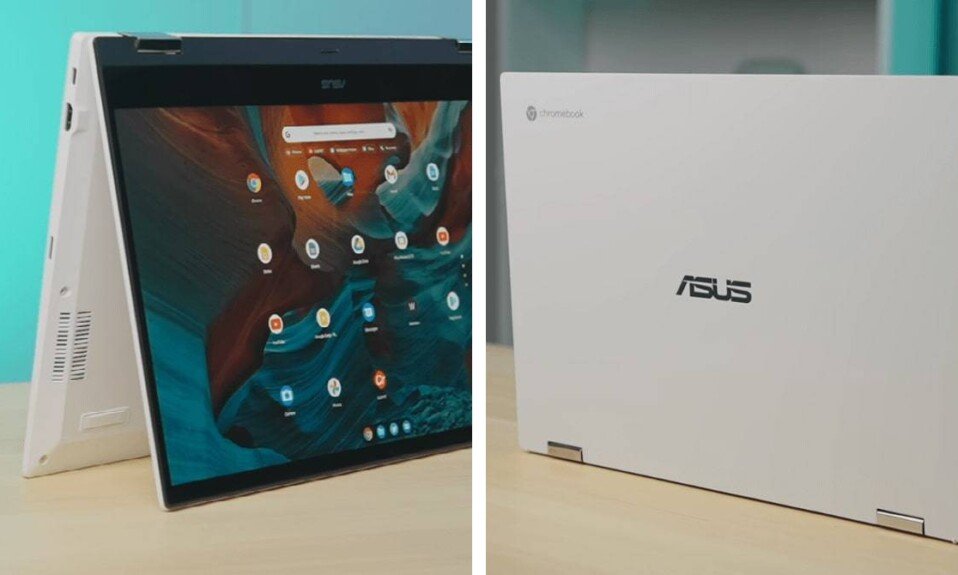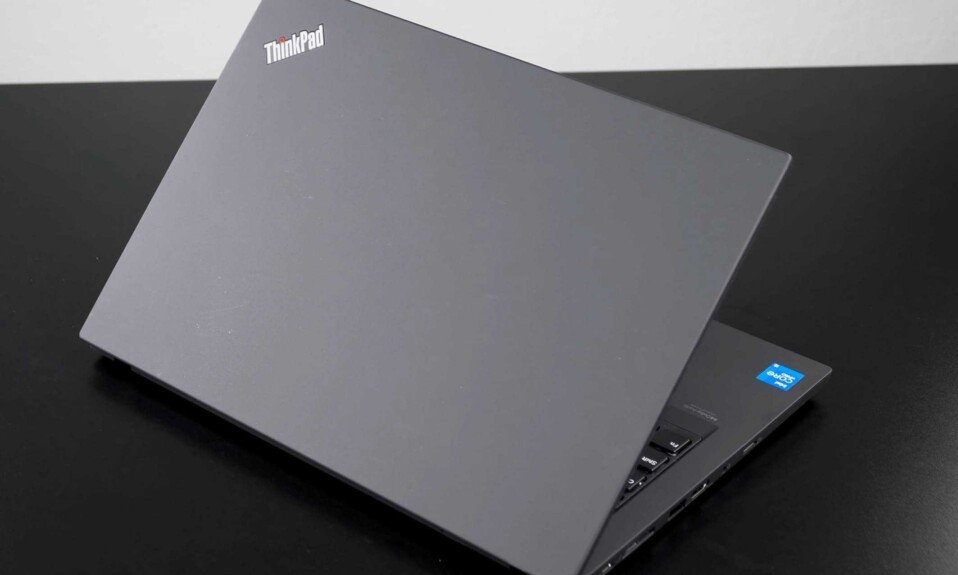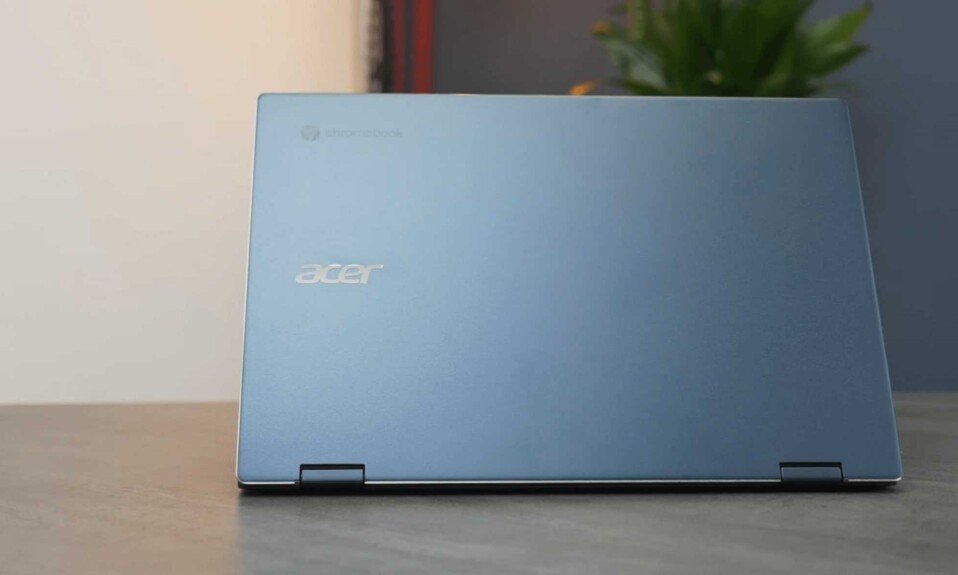A powerful computer at home and an ultrabook to work on the go: We tested the new Samsung Galaxy Book Go LTE precisely for this purpose. Samsung’s entry-level model is priced at 530 USD. The highlight of the 14-inch laptop: We have Windows 10 on ARM, i.e., a snapdragon™ 7c Gen 2 compute platform processor, which should work much more efficiently. Perfect for a portable ultrabook – actually. Has a good approach been messed up in Samsung-style?
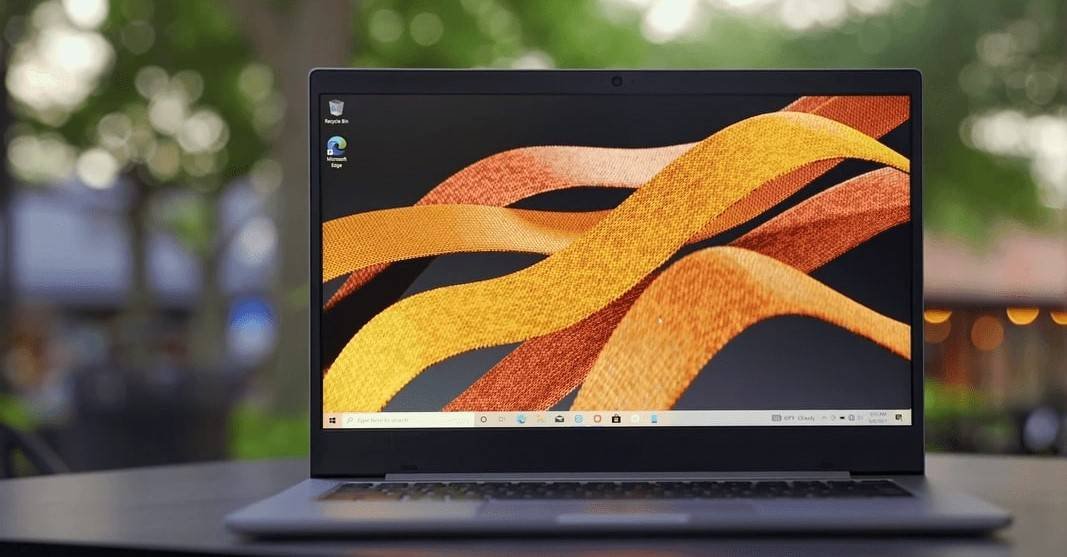
With the cheaper mid-range smartphones from the manufacturer, a slow processor is “often” a core problem. With the Samsung Galaxy Book Go, it’s the main memory: 4GB is too little for Windows 10. And there is no option to order a larger memory version; we don’t even have to talk about upgrading.
We have now messed up the voltage curve of the following review. But let’s take a look at how the Ultrabook with Snapdragon performs in practice, how good the hardware and equipment are and what tasks you can trust the Samsung Galaxy Book Go LTE to do.
Pros and Cons
| PROS | CONS |
| Good battery life | No multitasking possible |
| Good touchpad and keyboard | Made entirely of plastic |
| WiFi, LTE, and Bluetooth | Many programs do not work (Win10-ARM) |
| Many ports (Thunderbolt 4) |
Samsung comes with a brown box, and there are only the bare essentials besides the Samsung Galaxy Book Go. A bit of paper from Samsung (quick guide, warning notices), the power supply with up to 25 watts and an approx. 1.2m long USB-C cable.
General Info
| Samsung Galaxy Book Go LTE | |
| Brand | Samsung |
| Model | Galaxy Book Go LTE |
| Released | 3rd June 2021 |
| Processor | Qualcomm® Snapdragon™ 7c Gen 2 compute platform |
| Graphics | Qualcomm® Adreno™ GPU |
| OS | Windows 10 Home / Pro |
| Weight | 1.38 kg |
| Display | 14-inch TFT FHD (1920 x 1080) |
| Dimensions | 323.9 x 224.8 x 14.9mm |
| Type | Laptop |
| Color | Silver |
Windows laptops with Snapdragon still maintain a niche existence, and Intel / AMD processors make up the majority. But efficient ultrabooks are in demand: at least since Apple’s M1 processor, the pressure on the Windows group has been growing. Corresponding Windows models are already available, but they are also expensive. The ARM structure is much more efficient than x86. In addition, passive cooling without a fan is sufficient.
A variant of the more expensive Samsung Galaxy Book S with an Intel Core i5 and one with Snapdragon 8cx. Here the ARM variant is almost on par in terms of performance but 40 to 50% better in battery life. The advantages of ARM and Snapdragon are quickly summarized: Always connected to the Internet, ready to use when switched on, and much more efficient with long battery life.
The advantages of ARM and Snapdragon are quickly summarized: Always connected to the Internet, ready to use when switched on, and much more efficient with long battery life.
Design
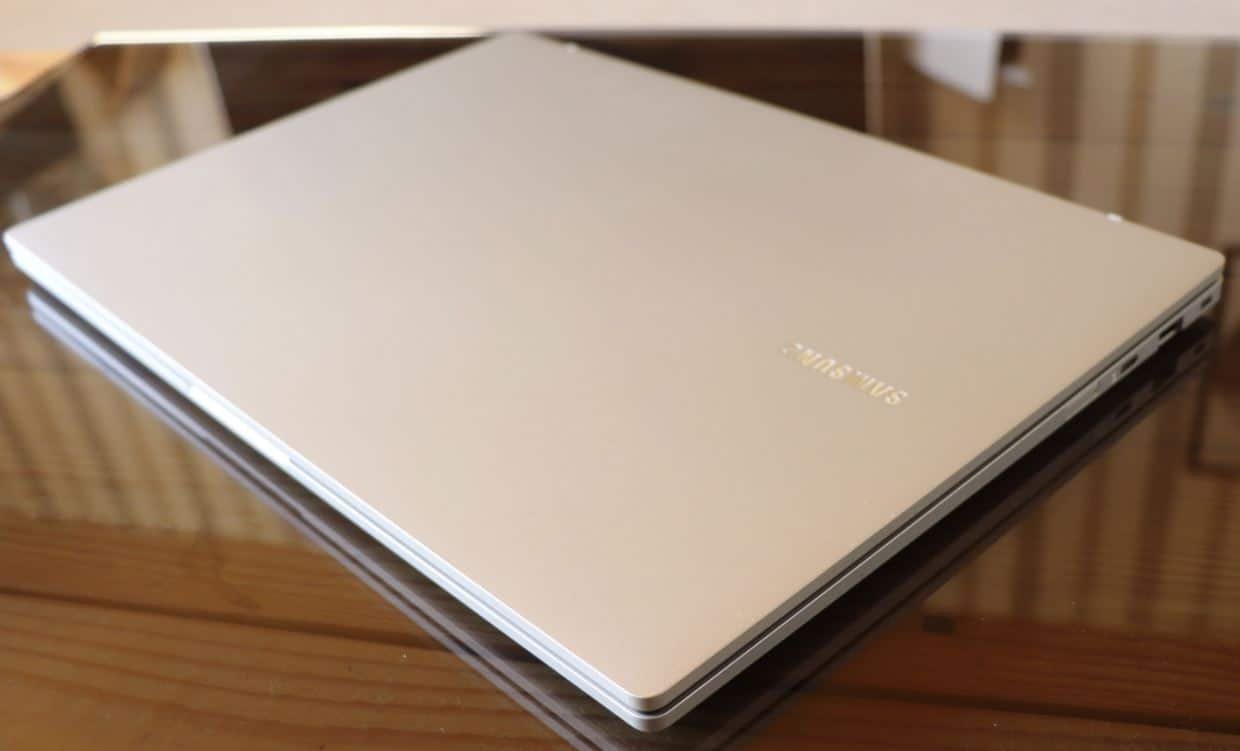
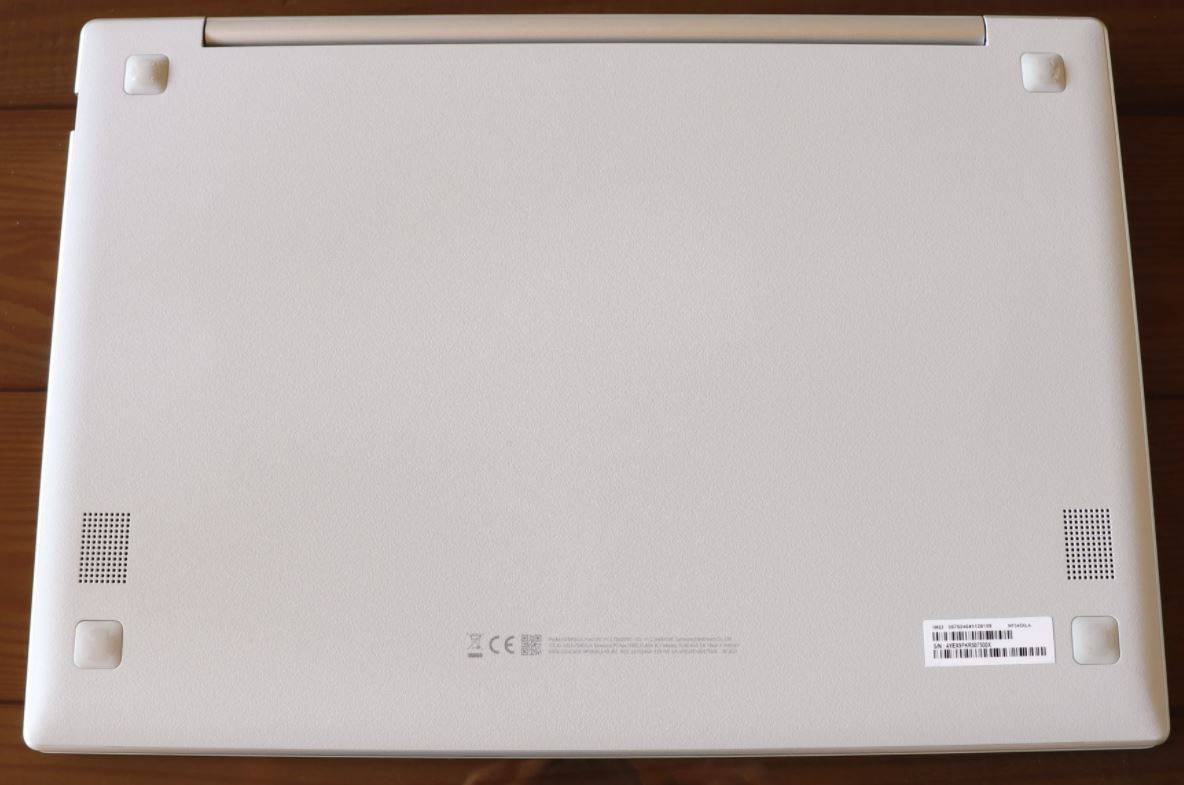
When folded, the Samsung Galaxy Book Go measures 323.9 x 224.8 x 14.9 millimeters and weighs 1.38 kilograms. You don’t get the feeling that the ultrabook is composed of several components, and of course, it keeps the price low. The device yields a little, and with two hands, it also allows twisting. This does not affect the stability, and the device is absolutely portable. Less than 1.4kg is good for a 14-inch laptop. The design is solid overall. There are gaps, especially at the hinge, but they are not disruptive.
There are four rubber feet on the underside so that the notebook stands securely on a table. There is a small gap to open the hinge, but you can only open the Samsung notebook with one hand with a little “wiggle.” The two speakers are also located on the left and right below. If you use the Galaxy Book Go on your lap, it can happen that you accidentally cover it.
Only classic silver is available as a color. The mix with the black matte (thick) frame around the display and keyboard is pretty boring in and of itself. On the back, we still have the shiny “Samsung” lettering. There have already been fancier and higher quality laptops – “functional but solid” is the closest thing to the Samsung Galaxy Book.
Display
| Display Type | IPS |
| Display Size | 14-inch |
| Display Resolution | 1920 x 1080 |
| Dimension | 323.9 x 224.8 x 14.9mm |
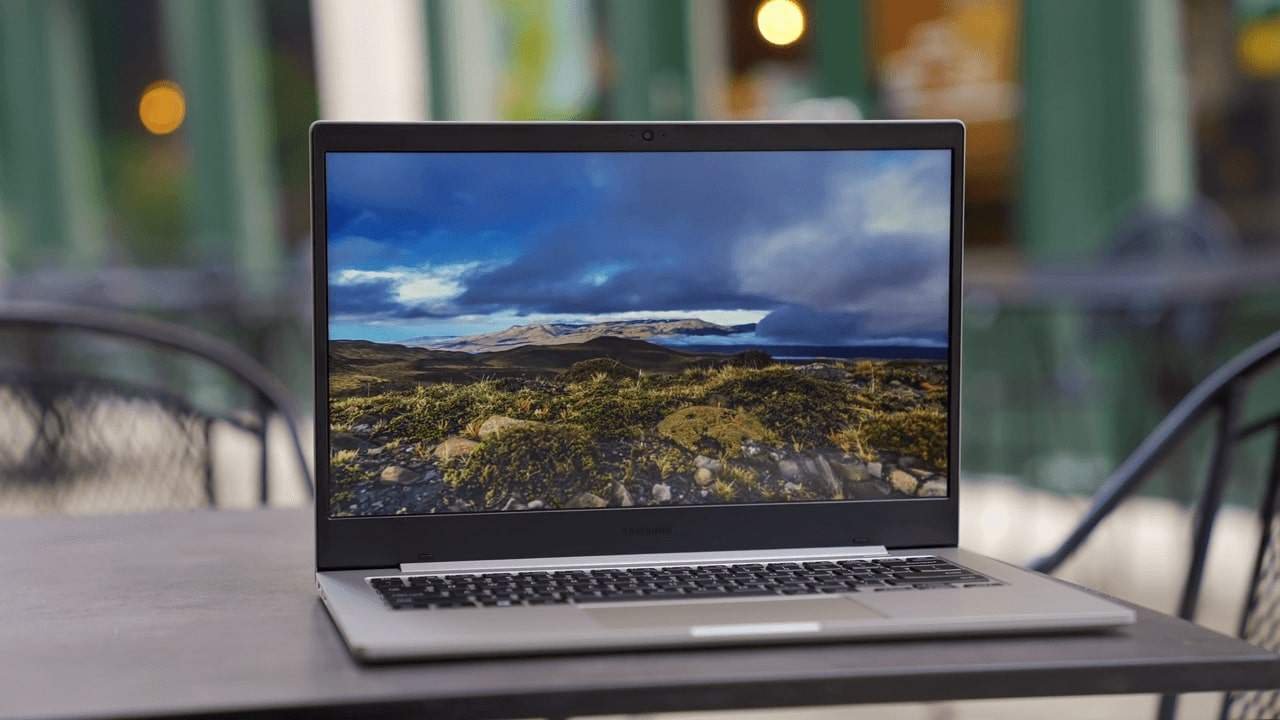
The LCD panel measures 14 inches diagonally in 16: 9 format. The resolution is 1920 x 1080 pixels / full HD, sufficient for a pixel density of 157 PPI. The refresh rate is 60 hertz.
The panel has a matt surface / “anti-glare.” The picture is not as strong as with glossy panels, but you are not disturbed by reflections. This means that the screen brightness can be set a little lower. With the maximum brightness, the maximum brightness is still required for a decent picture outdoors. We measured a maximum of 280 cd / m² and minimum brightness of 2cd / m² with the Samsung galaxy book.
The illumination is even enough so far. We have 240 cd / m² in three corners, 260 cd / m² only at the bottom left, and towards the center, it becomes brighter up to maximum brightness. However, you can also discover small halos (darker areas) in all four corners with a completely white image.
The hinge of the Samsung galaxy book can be opened up to 180 ° and thus “flattened.” Small detail: a couple of rubber studs are even attached so that the galaxy book go lies flat and the hinge cannot bend. However, it is noticeable that the viewing angle stability is no longer so good from approx. 45 and the picture becomes dark. However, we don’t have a touch display.
Of course, we don’t have an OLED panel here, and neither do we have a higher resolution or refresh rate. It would not be compatible with the hardware performance of the Galaxy book go LTE. The built-in LCD panel is absolutely functional but also good for the price! You don’t really expect more at a price, and the colors, contrast, and resolution are okay.

The best hardware is of no use if typing becomes cramped. The Samsung Galaxy Book Go LTE leaves it with a simple keyboard and touchpad but uses solid components.
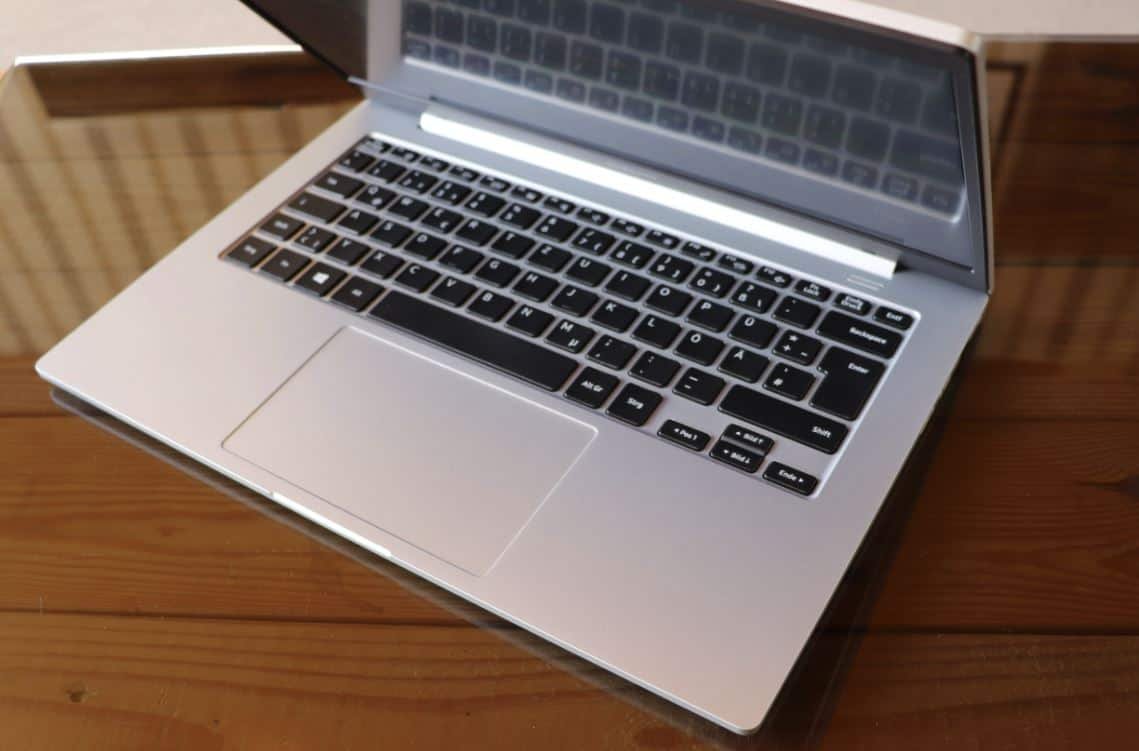
The trackpad measures 120 x 75mm and offers enough space for navigation and gestures. The surface is made of plastic. You can tell the difference to glass, but it still glides comfortably over it. Windows recognize the touchpad as a “precision touchpad,” The normal swiping gestures with two or more fingers are implemented without any problems. Unfortunately, not quite as smooth when the RAM is (again) full.
You can bend the keyboard a bit in the middle of the keyboard, which is not an issue with plastic and the price range. You have to get used to the large 3.5mm distance between the individual keys. The individual letter keys measure 16 x 16mm.
There is no keyboard backlight. The power button is located separately at the top right.
Performance
| Processor | Qualcomm® Snapdragon™ 7c Gen 2 compute platform |
| Graphics | Qualcomm® Adreno™ GPU |
| RAM | 4GB, 8GB (LPDDR4X) |
| Storage | 64GB, 128GB (eUFS) |
Qualcomm provides computing power or “computing efficiency” with the Snapdragon 7c Generation 2. Incidentally, Gen 2 hardly differs from the Snapdragon 7c from 2019. The Octa-Core is manufactured in the 8nm process and uses two ARMs -Cortex-A76 cores with up to 2.55 GHz and six Cortex-A55 cores. The Adreno 618 GPU is integrated as the graphics chip and the Hexagon 692 as the NPU.
The synthetic benchmarks already show a problem: PCMark 10 and 3DMark are not compatible with ARM. In Geekbench 5, the Snapdragon 7c Gen2 is roughly on par with an Intel N4120 or Celeron J5125, but fortunately above the long-established N3350.


The Samsung Galaxy Book Go always comes with 4GB LPDDR4x memory (dual-channel) and 128GB eUFS storage space. In the benchmark, the eUFS memory achieved a read/write speed of 458/185 MB / s.
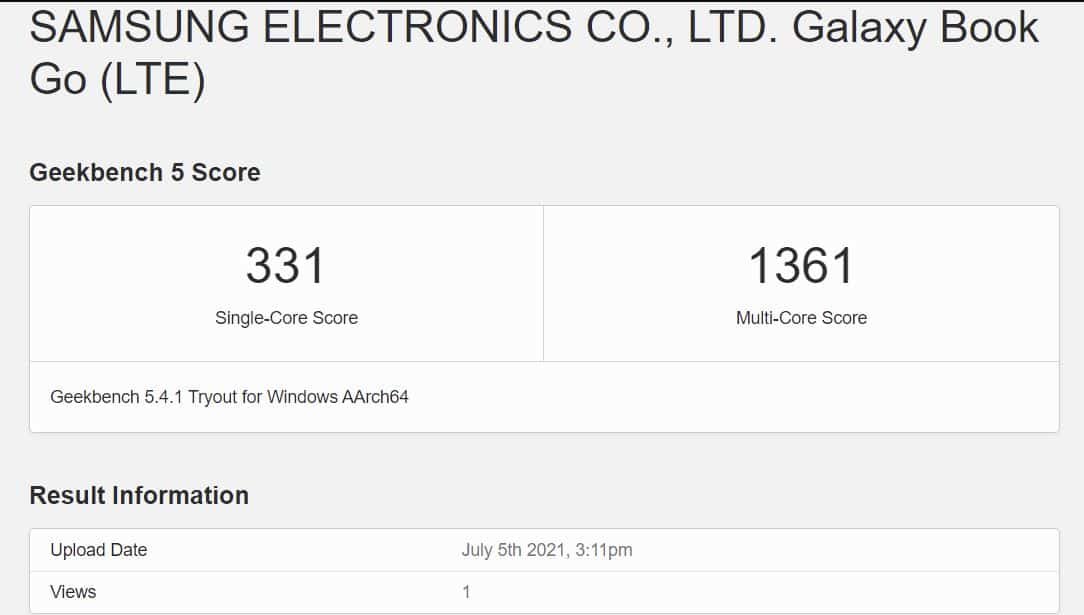
The Snapdragon 7c (Generation 2) is designed as an entry-level processor for inexpensive Windows notebooks. The Snapdragon 8c can compete with an Intel Core i5 in terms of performance. How the construct of Snapdragon 7c Gen2, low 4GB RAM, and Windows 10 performs in practice, more on that in a moment.
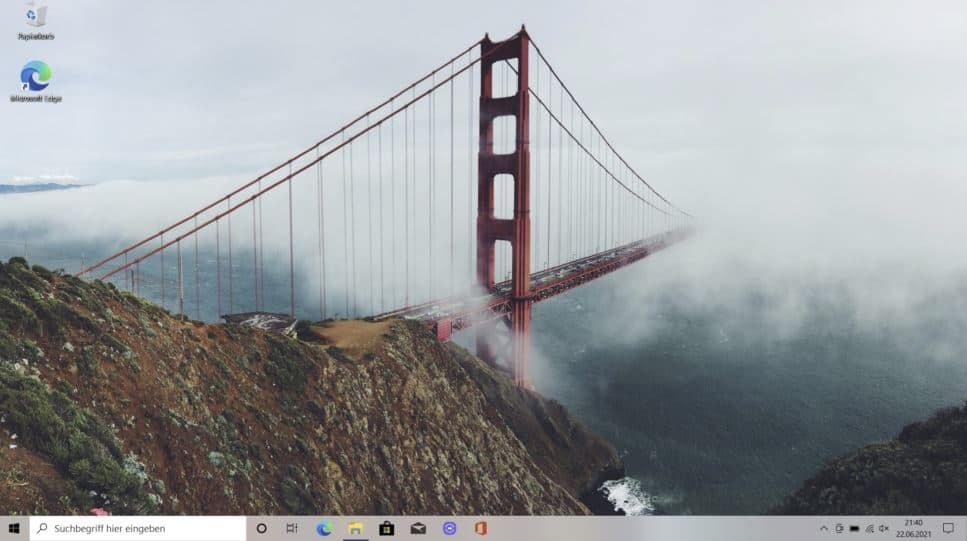
The Samsung Galaxy Book Go LTE is delivered with Windows 10 Home (64 bit) and can be set up in German directly after unpacking. Windows 10 for ARM, the “special” version for Ultrabooks with Snapdragon processors, is used. Here you can find your way around as normal because you don’t see any differences in practice.
All programs of the x86 architecture are not supported on Windows 10 ARM. Existing x86 Win32 apps can, for example, simply be emulated by the system and run “without you noticing” ( Microsoft writes itself ). The Windows “Compatibility Troubleshooter” can also help. Or an ARM version of the corresponding program/app is already available. Many programs/services also offer a web version (runs in the Internet browser). So you have to check beforehand which programs are compatible with “Windows ARM” and whether the Galaxy Book Go offers enough performance at all.
Snapdragon with Windows works well together! Of course, we don’t have a powerhouse with the Snapdragon 7c or the Snapdragon 8c, but they work all the more efficiently, and you are happy about the long battery life.
Multimedia
| Webcam | Above the display |
| Webcam resolution | 720p |
| Audio | 720p HD / Digital Mic |
| Network | LTE,17 Wi-Fi 5,18 802.11 ac 2×2, |
| Bluetooth | Bluetooth v5.1 |
| Ports | USB Type-C (2), USB 2.0 (1), 3.5pi Headphone/Mic, MicroSD, Nano-SIM,23 Nano Security slot |
| Keyboard Numpad | No |

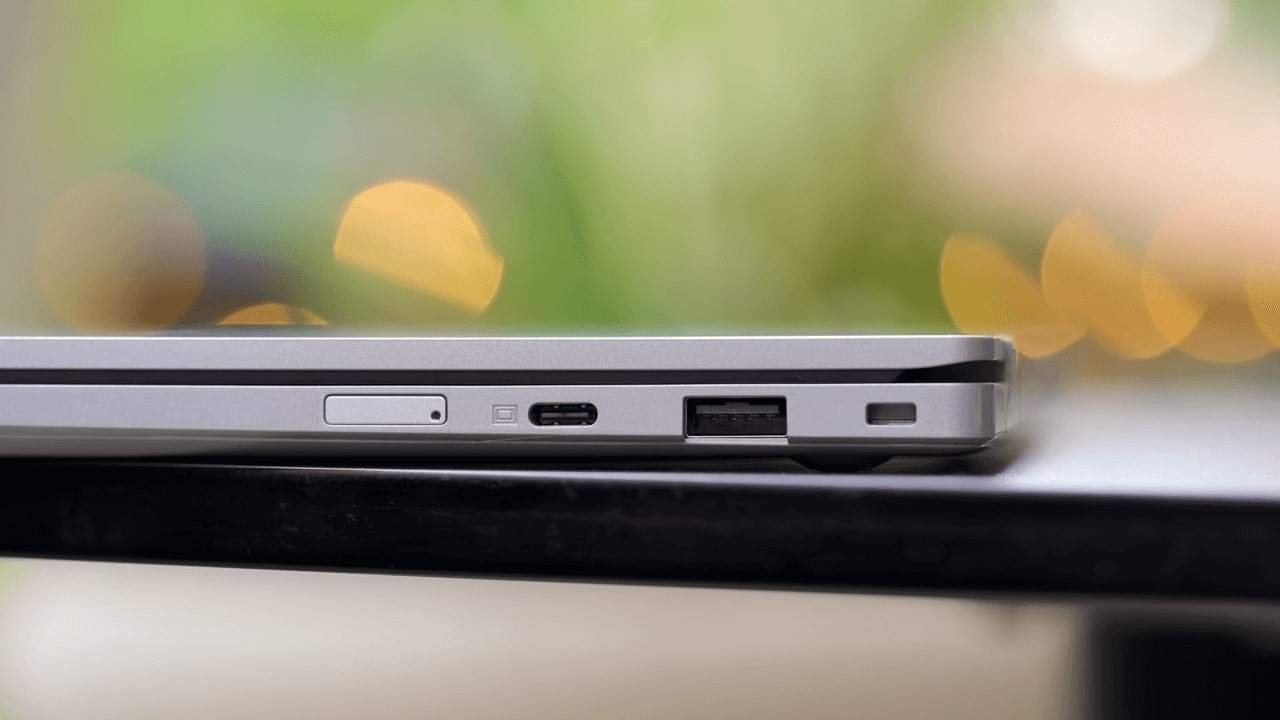
A few ports can be accommodated on the 14-inch notebook, and the latest connection standards are also installed under the hood. We have installed the following connections on the Samsung Galaxy Book Go:
- Left: USB-C 3.2 for charging with a multi-colored status LED next to it – data transfer is also possible.
- 3.5mm jack connection (4-pin) for headphones or a headset with a microphone
- MicroSD card slot to read memory cards or to permanently expand the storage space of the Galaxy Book Go
- Right: Slot for the NanoSIM card for cell phone reception while on the move
- USB-C Thunderbolt 4 with all functions of the USB-C 3.2 port, also suitable for charging or connecting external displays
- USB-A 2.0
- Kensington lock as a short-term security option with a lock

The webcam only has a resolution of 720p, which is sufficient for video telephony, and the quality is also useful. The thick frame around the panel also has a positive aspect: you don’t have to do without the front camera. It simply finds its place in the original position at the top in the middle. The frame measures 13mm at the top, 23mm at the bottom, and 7mm on the left and right.
The integrated microphone also does a solid job but tends to distort voices slightly in the test when speaking a little louder. We have two drivers on speakers with 2 watts each for stereo sound and optimization using Dolby Atmos. There is really no sound volume with videos and music. For a YouTube video in between, a volume of 20% is sufficient, and the sound is well coordinated.
The Samsung Galaxy Book connects to local networks via WiFi 5 (2.4 and 5.0 GHz, WPA3 support). The range is solid. The Huawei Matebook X Pro was no better here. WiFi 6 would, of course, have been the icing on the cake, but you can do without that in this price range. You can also use the Internet without WiFi or a hotspot on the go. As the name suggests, the Samsung Galaxy Book Go supports cellular reception. The following LTE frequencies are supported:
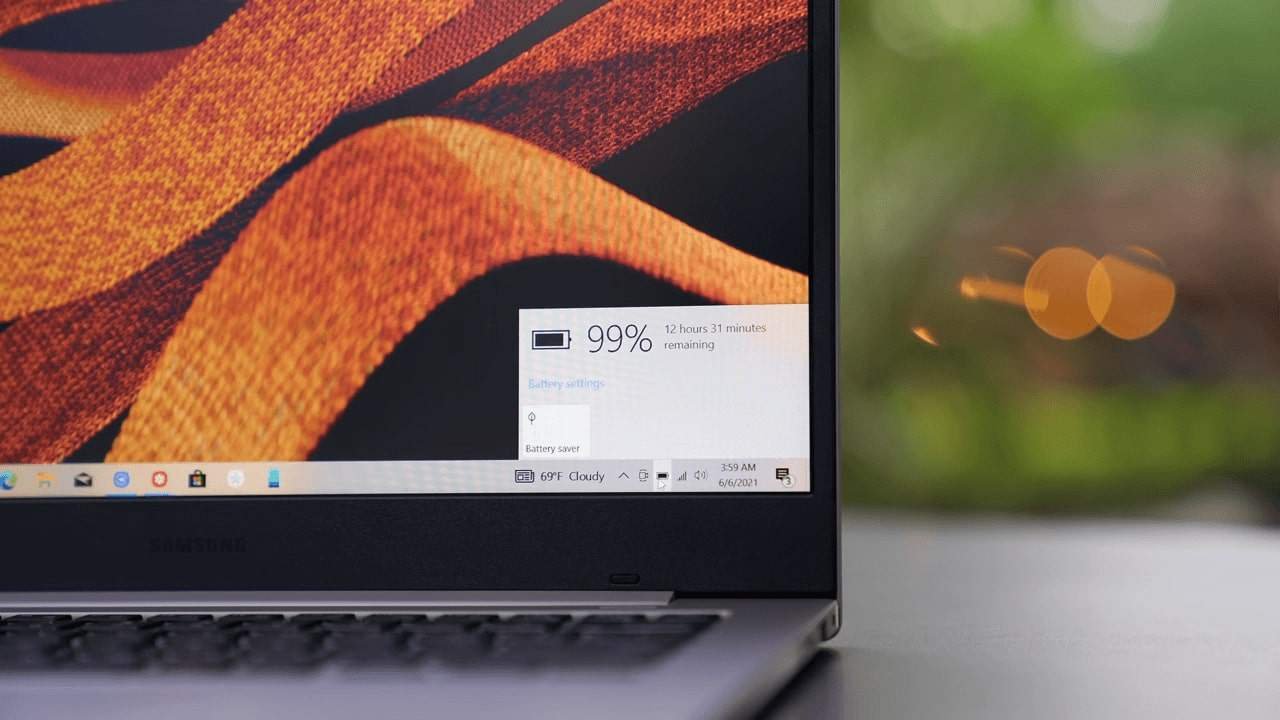
A 5G version of the Galaxy Book Go roaming around the network, but the X15 modem integrated into the Snapdragon chip only supports 4G LTE (Down Cat 12 / Up Cat 13).
The Galaxy Book Go connects to other devices via Bluetooth 5.1. Thanks to the Snapdragon CPU, audio is even transmitted with AptX. Even GPS is on board and supports the services of GPS, Glonass, Galileo, and Beidou.
There is also the “Always On Feature” thanks to the Snapdragon chip. It doesn’t make that much sense with an ultrabook: The Galaxy Book Go can stay online via WiFi or LTE if desired, but you don’t get any notifications when the display is closed.
Battery
| ASUS Chromebook Flip CX5 | |
| Battery Type | 6-Cell |
| Battery capacity | 42.3Wh (Typical21) |
| AC Adapter | 25W USB Type-C Fast Charger |
But now we come to the pleasant aspects of the Samsung Galaxy Book Go LTE, which can also be traced back to the Snapdragon 7c 2nd gen. Samsung installs a battery with a capacity of 42.3 Wh, which is in the middle range. Nevertheless, working for more than 9 hours with moderate display brightness is absolutely no problem in practice. A brighter picture is needed outdoors, and the runtime is more like 6 to 7 hours.
For comparison: The Huawei Matebook X Pro, has a 56 watt-hour battery and is closer to 8 hours. Sure, it also has a high-resolution display and significantly more power.
The charging option via USB-C is also successful. So you can either use the included power supply with 25 watts or other power supplies or power banks with power delivery and then even with up to 33 watts. Both USB-C ports can be used equally for charging; they do not differ in charging performance.
The original power adapter, the Samsung Galaxy Book Go, charges from 0 to 100% in 130 minutes. Between 20 and 80%, 20% reloading is also possible in 15 minutes. If you use a more powerful power supply instead, the battery is fully charged in an hour and 50 minutes.
Conclusion!
It should just be 8GB of RAM and that Samsung at least doesn’t offer this as an option.
In the lower price range for laptops and ultrabooks, you always have a certain basic price for the case, display, input devices, and basic equipment. The built-in hardware for the computing power then determines the price. This is also the case with the Galaxy Book Go: You get what you pay for plus long battery life. Especially the laptops with Intel Celeron, whether N3350 or N4450, are not faster but offer significantly less battery life.
Accordingly, one can only give a minimal purchase recommendation for Samsung Windows on ARM laptops. The Snapdragon is not a cheap and powerful arithmetic weapon. In addition, you can hardly use more than two programs at the same time during operation, and you are still limited to the ARM-compatible programs.

